KitchenAid vs Cuisinart: Which stand mixer is best?
The battle of the stand mixers
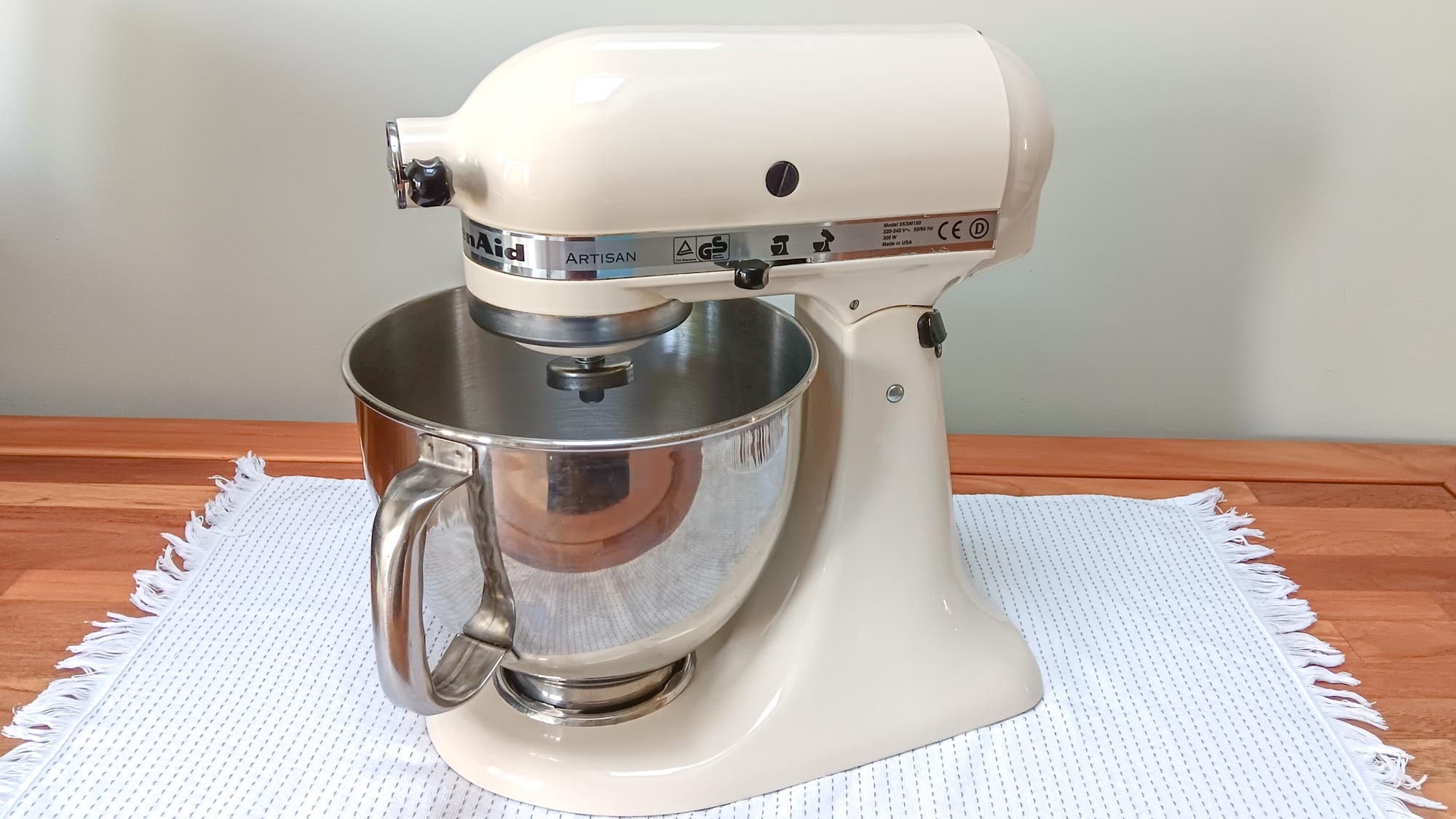
KitchenAid's Artisan 5-quart stand mixer is your reliable baking friend in the kitchen. It will whip, beat and knead ingredients without a second thought, leaving you to concentrate on the final flourishes. It is a beast to move, as it weighs nearly 25 lbs, but with an appliance that looks this good, you won't want to hide it in a cupboard.
For
- Durable and solid appliance
- Consistent results
- Easy to use
- Good bowl capacity
- Stable in use
Against
- Heavy to move
- Not all attachments are dishwasher safe
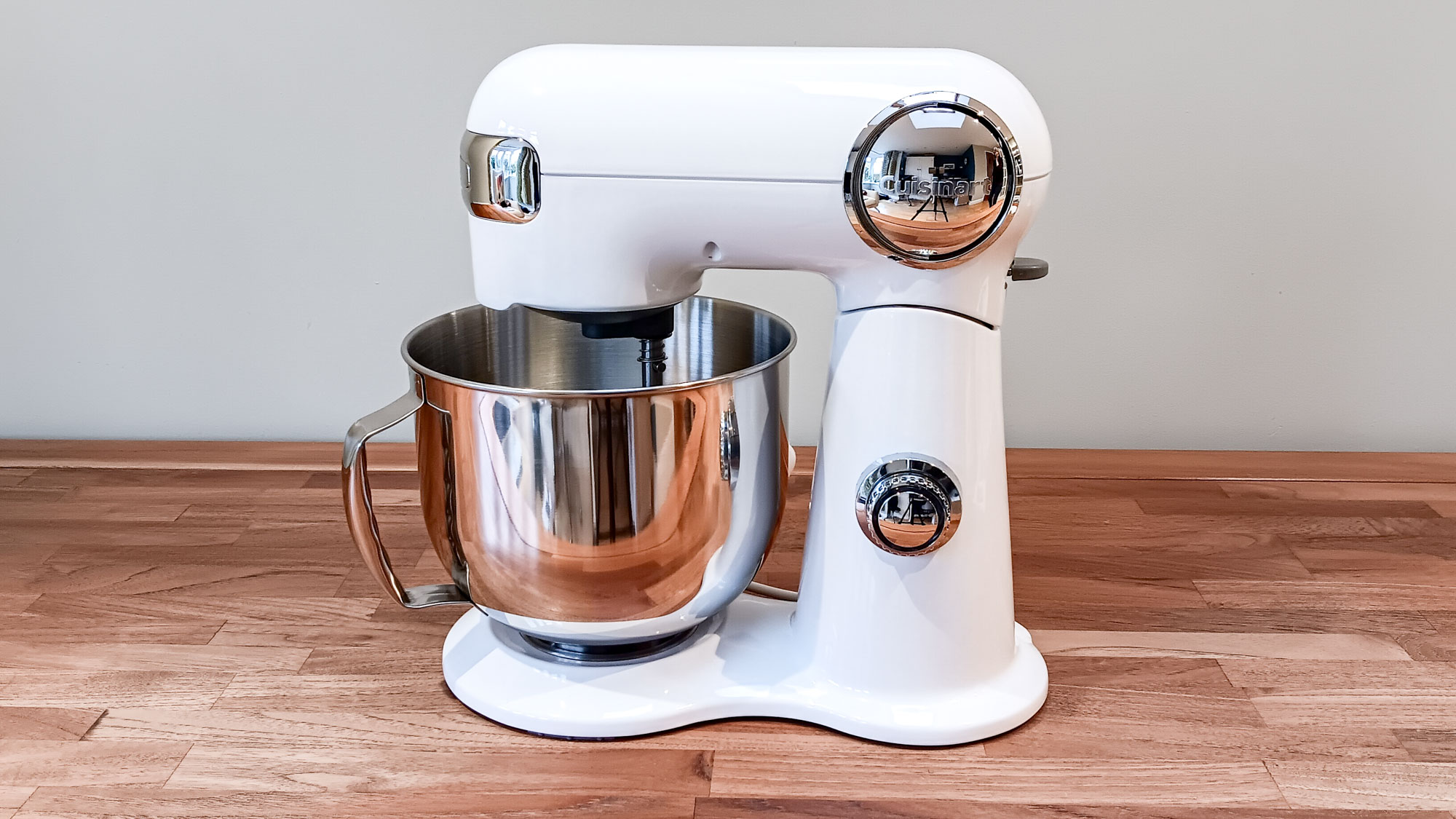
Cuisinart's Precision Master 5.5 quart stand mixer has an attractive and compact design, and is easy to move around your countertop. It is intuitive to use and it will happily whip up cream and knead dough, offering all your baking needs in an affordable, mid-range appliance. It also features a central to add extra appliances.
For
- Affordable
- Quiet
- Large bowl capacity
- Wide color choice
Against
- The splash guard is tricky to use
- Ingredients sometimes get left on the side of the bowl
I always enjoy the opportunity to test one of the best stand mixers, as I don't need much of an excuse to make a vanilla cake or a loaf of homemade bread. And apart from enjoying the making, I thoroughly enjoy the eating.
KitchenAid is one of the most prestigious kitchen appliance brands, and I've owned a KitchenAid Artisan stand mixer for many years. But they come at a premium price point and could have you forking out a pretty penny for the pleasure.
However, there are more affordable options out there, so I recently put Cuisinart's Precision Master stand mixer to the test to see how it performed against KitchenAid. Here, you can find out how they compare and which one comes out on top.
KitchenAid Artisan vs Cuisinart: Specs compared
| Header Cell - Column 0 | KitchenAid Artisan | Cuisinart Precision Master | Header Cell - Column 3 |
|---|---|---|---|
| Price (on manufacturer's website) | $449 | $249 | Row 0 - Cell 3 |
| Dimensions | 14.09 x 8.7 x 13.9 inches | 14.13 x 7.87 x 14.17 inches | Row 1 - Cell 3 |
| Weight | 24.9 lbs | 18.4 lbs | Row 2 - Cell 3 |
| Speeds | 10 | 12 | Row 3 - Cell 3 |
| Beaters | 3 | 3 | Row 4 - Cell 3 |
| Port for optional attachments | Yes | Yes | Row 5 - Cell 3 |
| Bowl capacity (quart) | 5 | 5.5 | Row 6 - Cell 3 |
KitchenAid vs Cuisinart: Price and availability
The Cuisinart Precision Master 5.5-quart stand mixer is available at a range of online retailers, but price varies according to color choice. At Amazon, you can pick up most colorways for $249. It’s the same story at Walmart, where the majority also retail at $249, although you can pick up some colorways for less.
KitchenAid's Artisan 5-quart stand mixer is also available at a range of online retailers, including Amazon, with a list price of $449, but you can often find the appliance discounted, so it's worth being patient if you want to make a saving. At the time of writing, KitchenAid is also offering a $100 discount.
Winner: Cuisinart
KitchenAid vs Cuisinart: Design

The KitchenAid and Cuisinart stand mixers look smart, although the KitchenAid has a more retro style. Both have a tilt-head design, which means the top section lifts for you to remove and replace the bowl and attach the accessories. Both bowls are very similar, with one handle, although the Cuisinart bowl has a slightly greater capacity at 5.5 quarts as opposed to 5 quarts.
The KitchenAid is a solid stand mixer, which you'll soon see once you pick one up; it could even save you the price of a gym membership! So, if weight is an issue, the Cuisinart will be a better fit, and even though it is lighter, it still feels like a solid machine.
I always think of KitchenAid as offering a large array of color choices, which is hard to beat, but Cuisinart won't disappoint. If you're looking for a stand mixer to add a spark of color to your kitchen, you can opt for either brand. And if iconic styling is your thing, you might also be interested in discovering the difference between the KitchenAid Artisan stand mixer and Smeg's retro stand mixer.
However, KitchenAid does offer you the option to customize your stand mixer. When you purchase a stand mixer on KitchenAid's website, you can select whether you want a tilt-head or bowl-lift design, along with bowl capacity and color choice, before opting for an extra bowl — such as one with a quilted stainless steel design. In my mind, that gives it a solid win when it comes to design.
Winner: KitchenAid
KitchenAid vs Cuisinart: Functionality
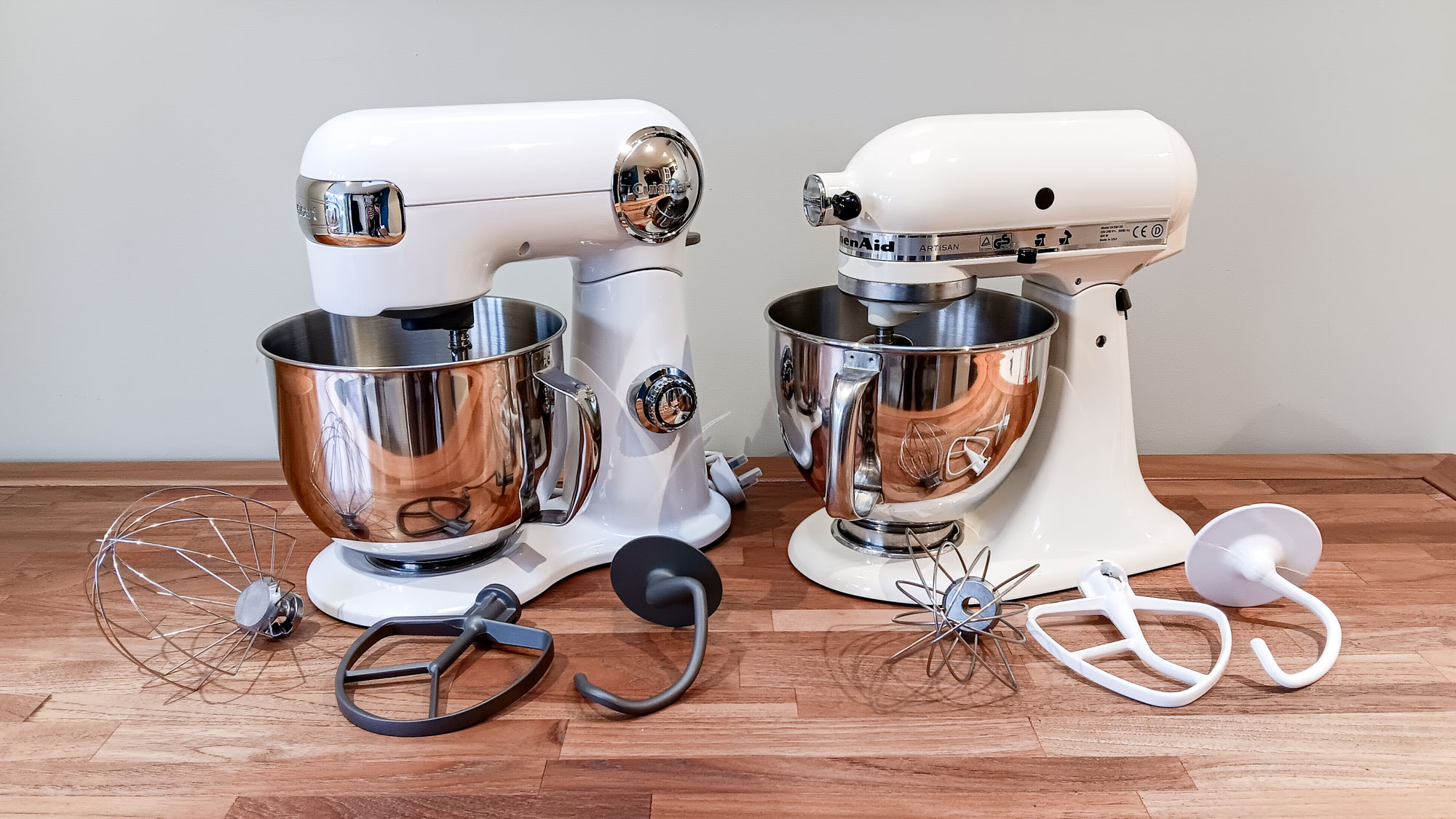
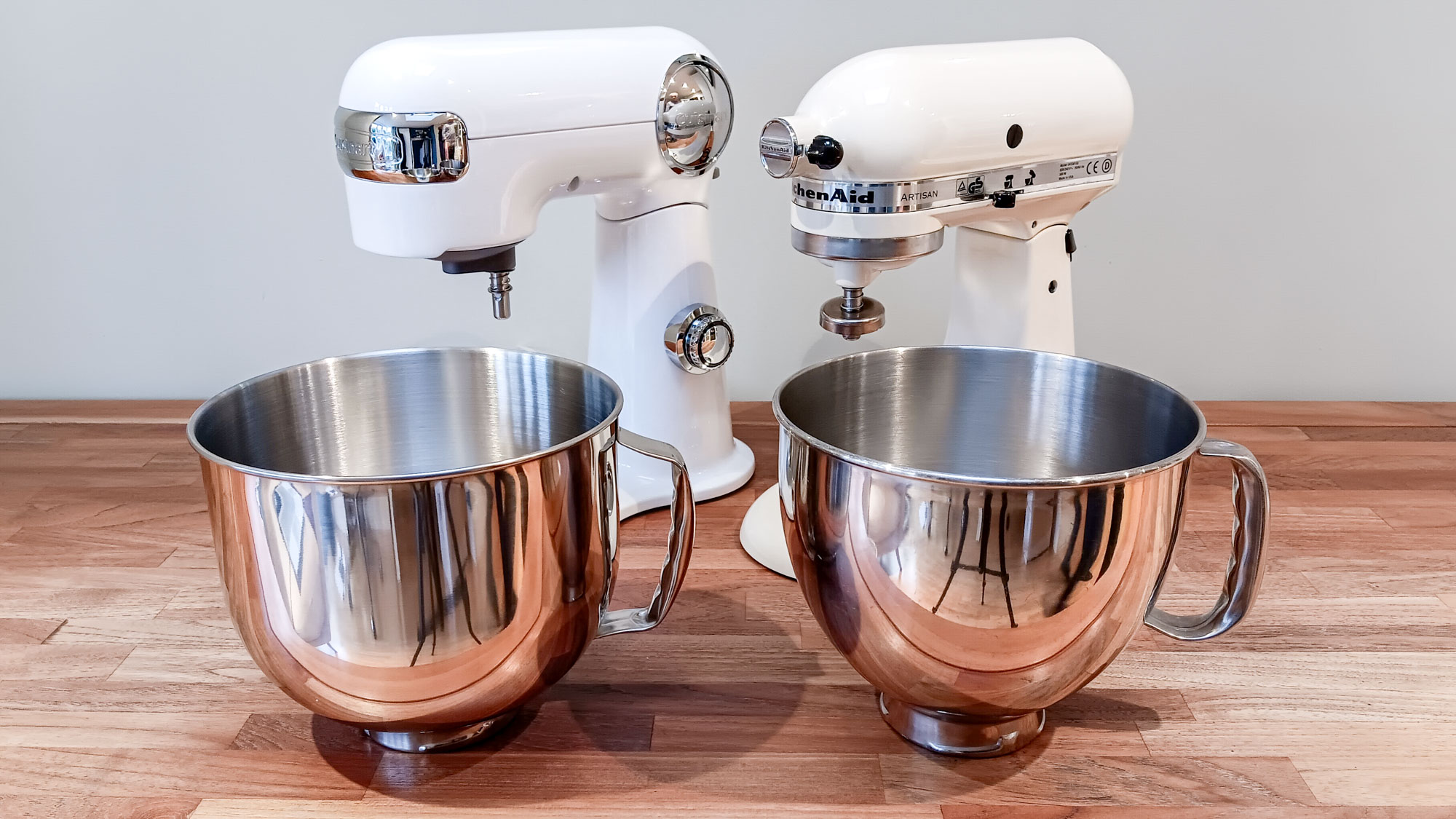
Both stand mixers offer plenty of capacity for batch-baking bread, cakes, and cookies. I made a vanilla cake in both, using a 3-egg-based recipe, and found there was plenty of room for more. Either one could have easily handled at least double the ingredients.
They are equally matched in accessories, both having a wire whisk, flat beater, and dough hook. However, with KitchenAid you can purchase an additional flex-edge beater for $34 at KitchenAid, which I would highly recommend for incorporating ingredients stuck to the bowl's edge. It has the addition of a silicone paddle on one side, saving the bowl from being scratched with a metal beater.
Both have a handy splash guard, which also acts as a pouring shield. However, the KitchenAid version is much easier to use. It comes in one piece and slides into place on top of the bowl. The Cuisinart version comes in two sections and needs to be joined together while on the appliance. I found this a bit tricky to use and would be tempted to allow the ingredients to fly out of the appliance rather than attaching the guard.

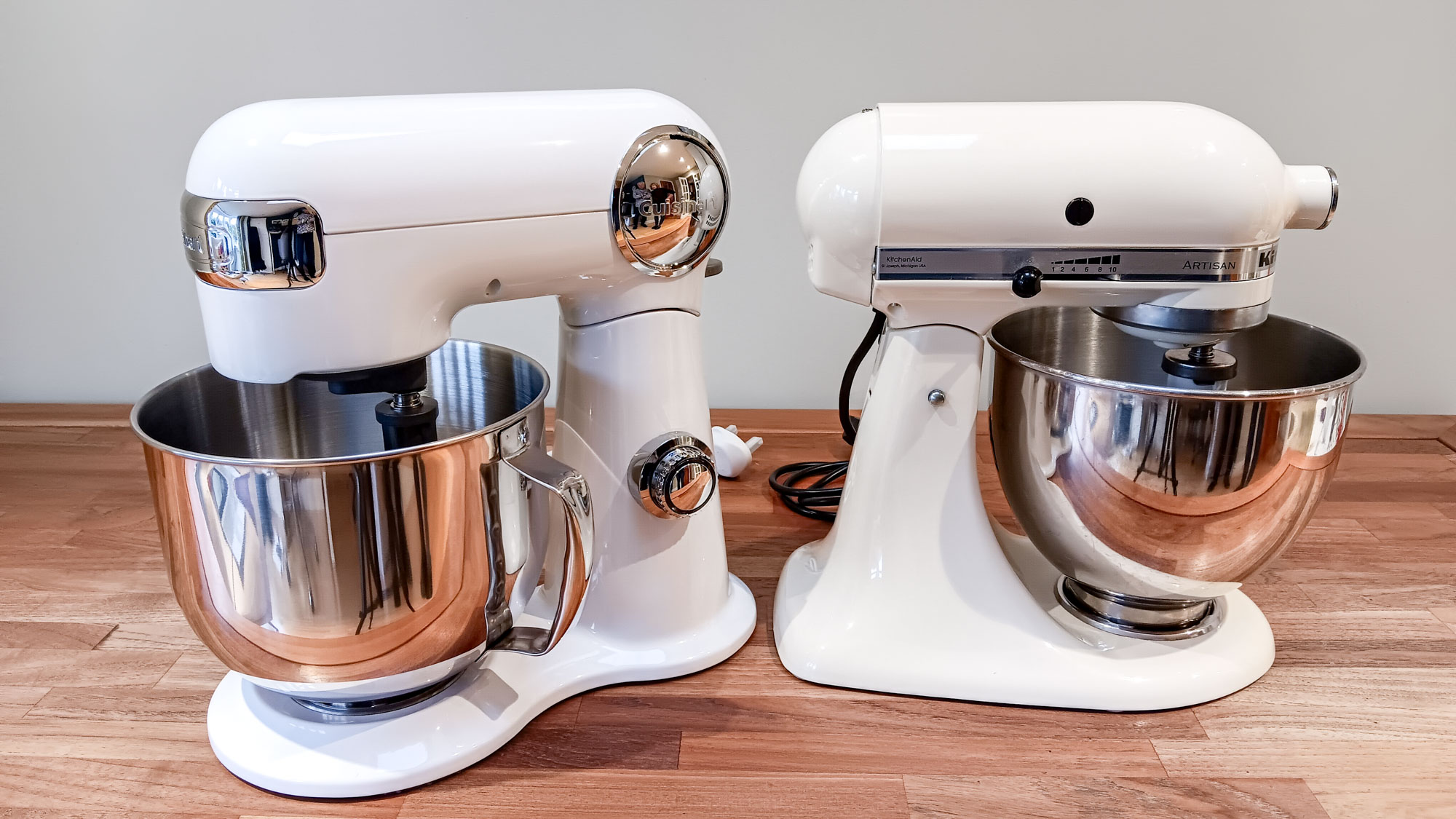
Another feature they both share is a central hub at the front of the appliance to house attachments. Both have a similar mechanism to secure the attachments, which increases the appliance's versatility, allowing you to grind meat, shape pasta, and spiralize vegetables. However, it's worth being aware of the cost of these attachments. The listing price for a food grinder at KitchenAid and Cuisinart is $59, and most other products are comparable, although KitchenAid offers a larger range of options.
The Cuisinart slightly beats the KitchenAid on the choice of speeds, with 12 options, as opposed to 10, although it isn't a deal breaker.
Winner: KitchenAid
KitchenAid vs Cuisinart: Performance
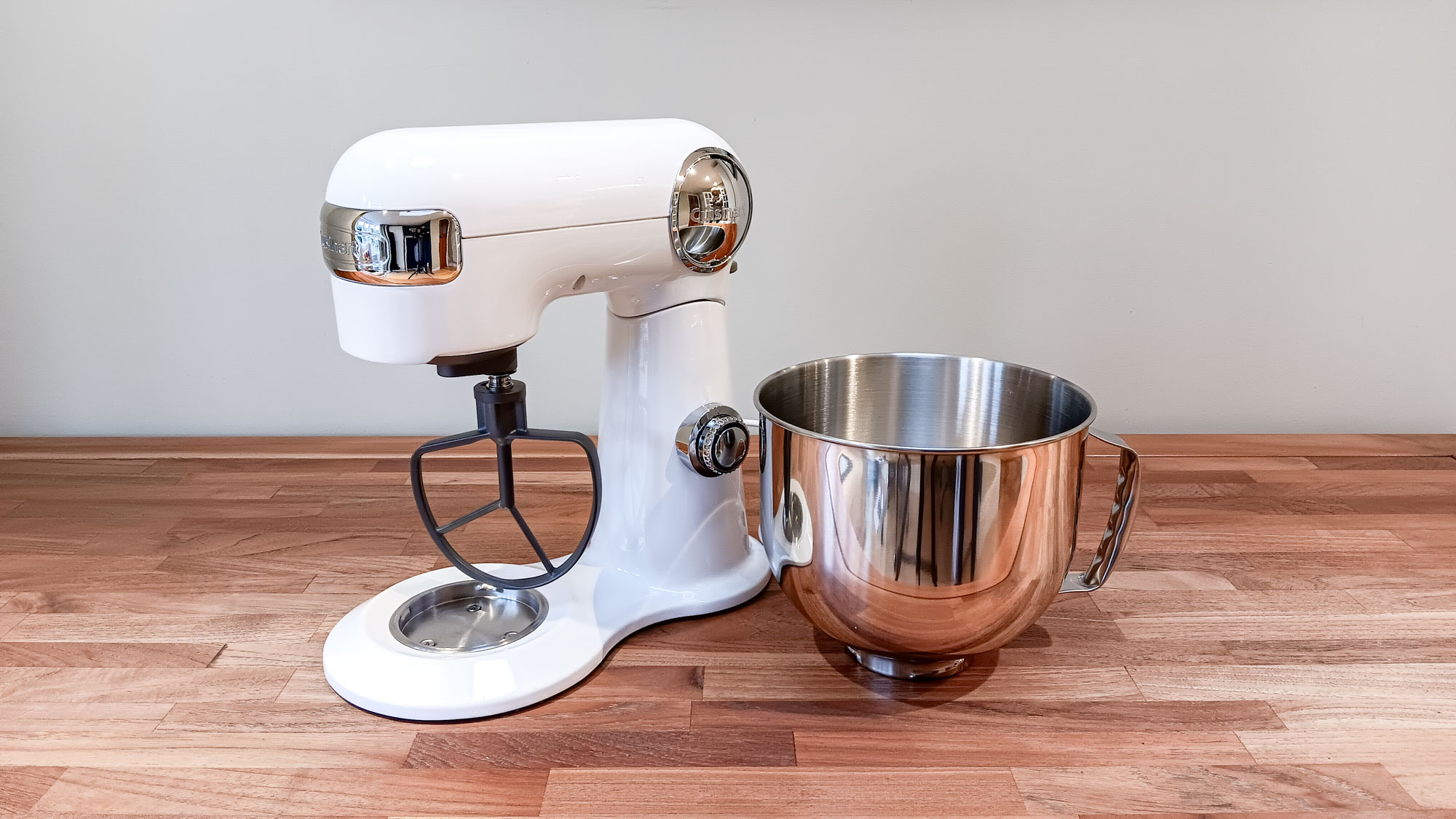





Both stand mixers performed incredibly well, and I would be happy to use either as my regular stand mixer (you've already read that I own a KitchenAid). However, I did need to intervene more frequently when using the Cuisinart to incorporate the cake ingredients that got stuck on the edge of the bowl.This is likely due to a slight difference in the bowl shape, with the KitchenAid appearing narrower at the base. Despite this, the stand mixers performed equally when whipping cream and kneading dough.
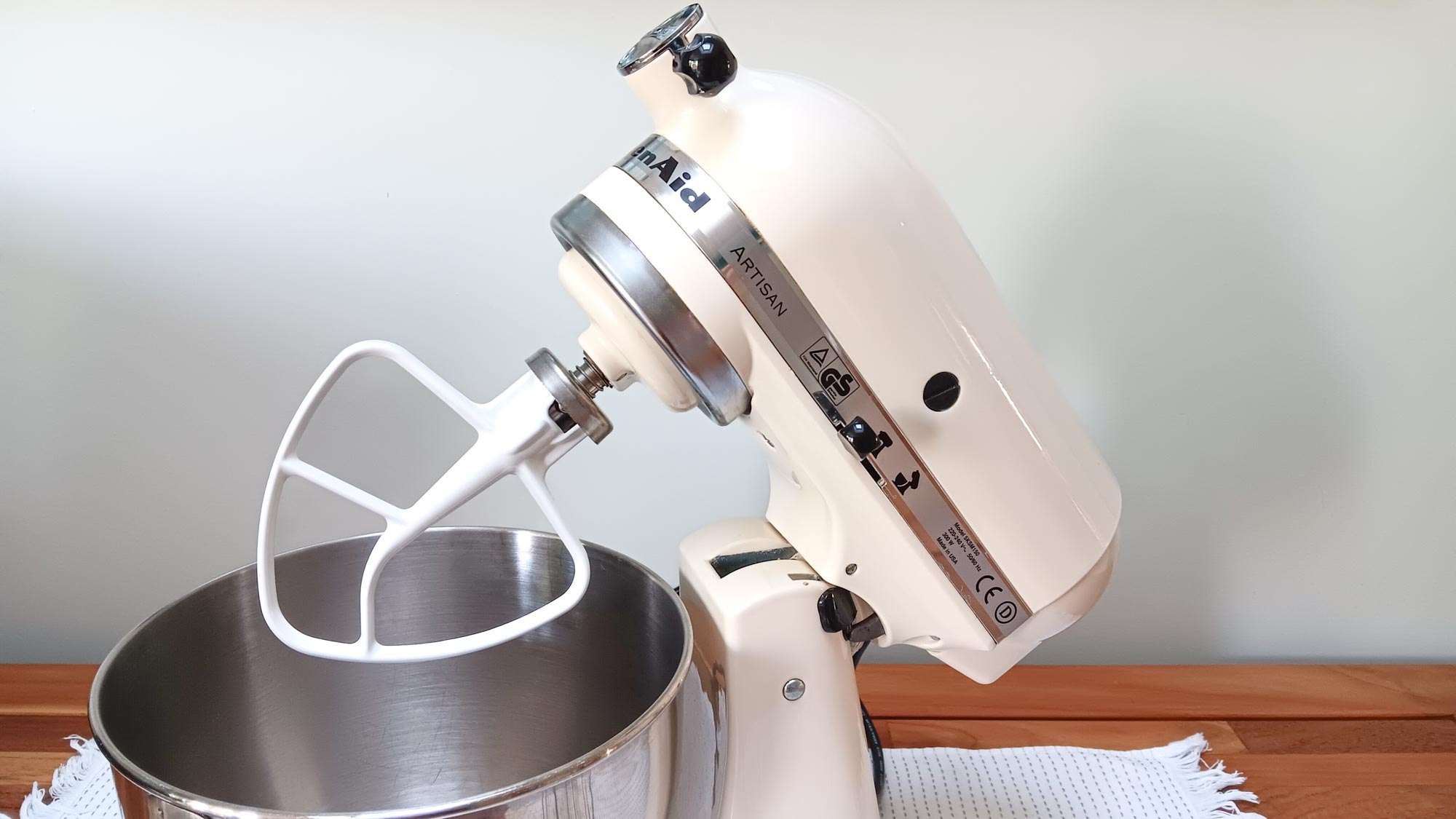





If you're looking for precision with your mixing, whipping, and kneading, Cuisinart wins over KitchenAid with two extra levels. I also found the speed dial on the Cuisinart easier to control than KitchenAid's lever.
Winner: Draw
KitchenAid vs Cuisinart: Ease of use
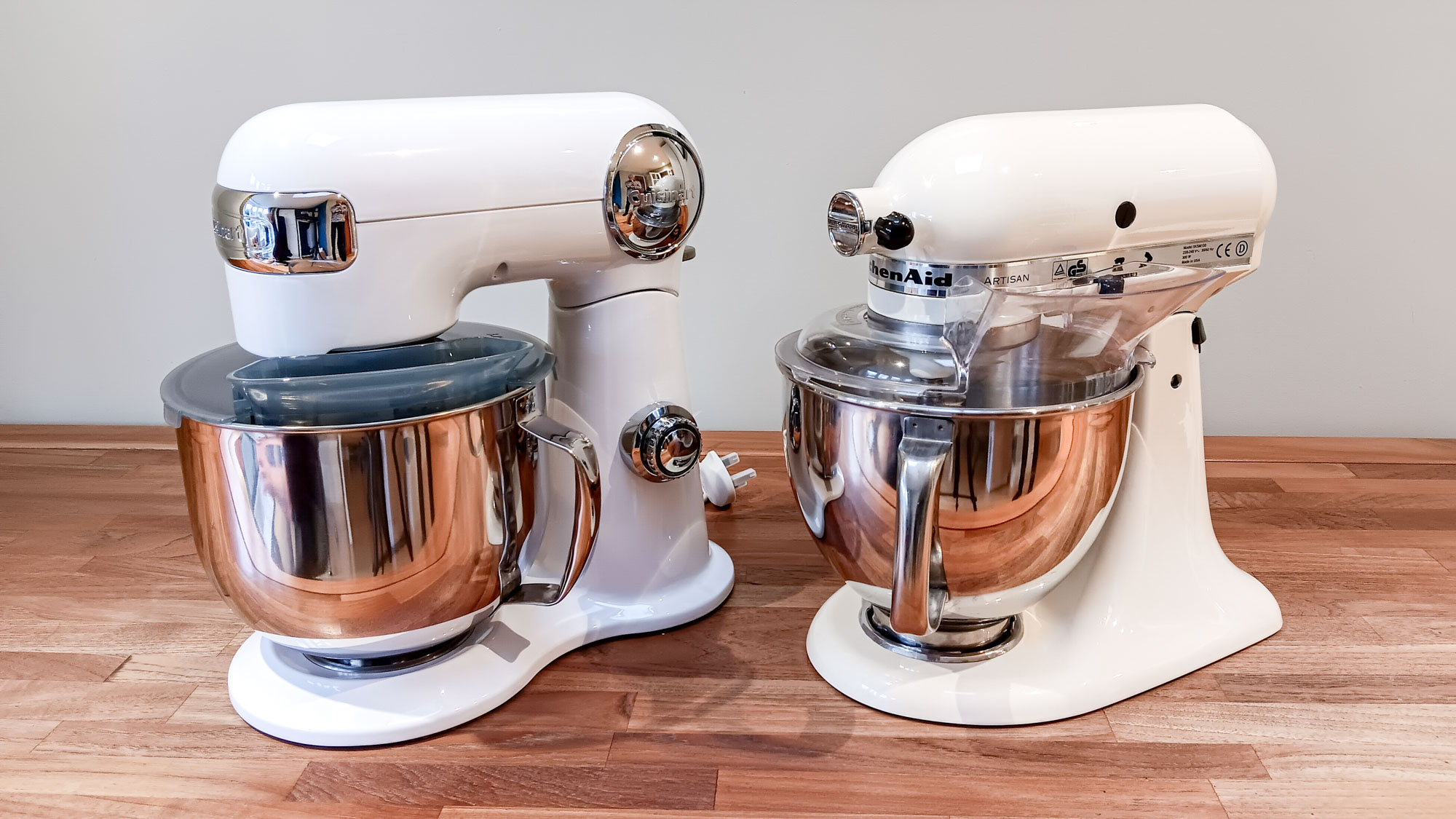
Both stand mixers are intuitive, and you can start without looking at the instruction manual. Both tilt-heads were easy to raise, and the bowls were simple to twist in place and remove. Plus, all of the attachments were easy to secure. Although I didn't have any additional appliance attachments to place on the central hubs, the design was similar for both appliances.
When in use, the speed settings were easy to use to control the desired speed of mixing. However, the one issue that stood out was the issue with Cuisinart's splash guard, which was awkward to put in place and remove. For this reason, "ease of use" goes to the KitchenAid.
Winner: KitchenAid
KitchenAid vs Cuisinart: Verdict
Both KitchenAid and Cuisinart stand mixers are a delight to use and are both worthy appliances to have in your kitchen. Although the Cuisinart stand mixer is lighter than the KitchenAid, it still felt robust and was up to the task of kneading dough.
Comparing these two products is a tight call as cost is also a big factor. And despite the splash guard being disappointing on the Cuisinart and that KitchenAid offers more attachments, I recommend the Cuisinart over the KitchenAid, for what it provides for the price.
When you consider it's possible to (almost) buy two Cuisinart stand mixers for the cost of one KitchenAid, it makes you think. While eagle-eyed readers will see the KitchenAid won more of the above categories, it was by a narrow margins considering the gulf in cost between the two.
My final word of advice is that if you want to take the plunge and buy a KitchenAid but the price has stopped you from making a purchase, keep your eyes on the sales, as there's often good discounts to be had if you're patient.
Winner: Cuisinart
More from Tom's Guide
Sign up to get the BEST of Tom's Guide direct to your inbox.
Get instant access to breaking news, the hottest reviews, great deals and helpful tips.

Camilla Sharman has worked in publishing and marketing for over 30 years and has covered a wide range of sectors within the business and consumer industries both as a feature, content, and freelance writer.
As a business journalist, Camilla has researched articles for many different sectors from the jewellery industry to finance and tech, charities, and the arts. Whatever she’s covered, she enjoys delving deep and learning the ins and out of different topics, then conveying her research within engaging content that informs the reader. In her spare time, when she’s not in her kitchen experimenting with a new recipe, you’ll find her keeping fit at the gym. In the pool, stretching at a yoga class, or on a spin bike, exercise is her escape time. She also loves the great outdoors and if she’s not pottering about in her garden, she’ll be jumping on her bike for a gentle cycle ride.
